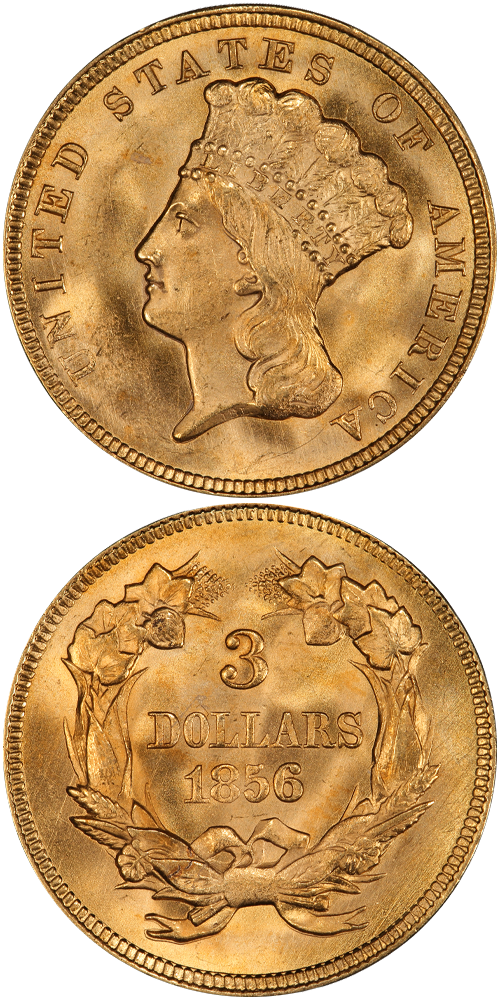1856 Gold Three Dollar
Today in retrospect in seems a puzzlement that three-dollar gold coins were ever issued in the first place, considering that the quarter eagle of similar value had been struck since 1796. But issued they were, under authorization of the Act of February 21, 1853, the same piece of legislation that reduced the weight of certain silver coins (resulting in arrows being added to the dates). Some numismatists have suggested that the owner of a three-dollar gold piece could have purchased a sheet of 100 three-cent stamps without requiring change, or could go to a bank and easily obtain 100 silver three-cent pieces.
In a flurry of enthusiasm, in the first year of coinage, 1854, the Philadelphia Mint struck 138,618 circulation strikes — a figure that would forever stand as the highest production in the series. Small quantities were made at the Dahlonega and New Orleans branch mints, after which those facilities never produced the denomination again. The San Francisco Mint first struck three-dollar gold coins in 1856, continuing to 1860, except for 1858 and 1859, after which just two were struck in 1870 for the cornerstone of the new Mint (of which just one example survives today). Coinage continued at the Philadelphia Mint through 1889, but in sharply reduced numbers. Very few of the later date examples ever reached circulation.
Four pairs of dies were made for use at the Philadelphia Mint in 1856, but only two reverse dies were employed to deliver 26,010 circulation strikes. These include what are called today the Low Date and High Date varieties. On the Low Date style, the digit 1 in the date is immediately centered below the letter O in DOLLARS; on the High Date variety the 1 is beneath the right side of the O. All of the three-dollar gold coins of this date were delivered in two batches in April of the year; perhaps they were from the two different reverses.
The example to the left was sold by Stack's Bowers Galleries in the August 2017 ANA Denver Auction, where it realized $64,625.






